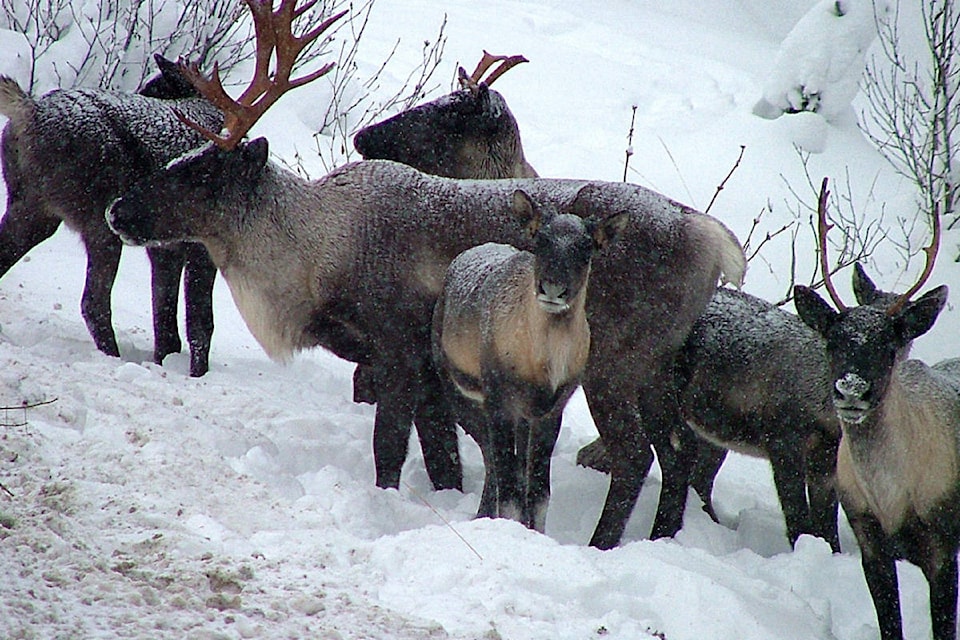Three caribou from soon-to-be extinct herds in the southern Selkirk and Purcell mountains have been relocated to Revelstoke.
Leo DeGroot, a wildlife biologist for the Ministry of Forests, Lands and Natural Resources, said two cows and one bull caribou were captured Monday and taken to maternity pens in Revelstoke with the intention of releasing them later this year.
DeGroot said the ministry conceived the plan last August as a way of giving the animals a better chance of survival in a region with the larger Columbia North caribou herd.
“The females will contribute to a breeding population where there’s males around, so there’s an advantage to moving them to bolster another population.”
News of the relocation first spread Monday when a Facebook user posted a picture of a ministry trailer containing caribou that was parked at a gas station in Salmo.
DeGroot said a census last March found just three cows in the Selkirk herd, while the Purcell herd had three bulls and a cow. All seven were collared in April, but according to DeGroot one Selkirk cow was killed by a cougar while the other went missing because of a malfunctioning collar.
That left just one cow — the last caribou alive that ranged in both Canada and the United States — remaining in the South Selkirks.
“It’s really sad to see them go,” said DeGroot. “For me, personally as well, my last 16 years of work has been with these animals and seeing them disappear is discouraging.”
The captured caribou are being kept at the site of the Revelstoke Caribou Rearing in the Wild project, which protected pregnant cows and calves from predators until they were ready to be released. The project technically ended in 2018, but DeGroot said the site will be used temporarily by the ministry.
“The calves are protected from predators during their most vulnerable first month of life, and they also end up in better condition because they’re fed in the pen,” he said.
“They’re fed a green mix, which is more nutritious than their natural food. So they are also released from the pen in better shape [and] better body condition.”
DeGroot said the ministry has not yet decided what to do with the two remaining bulls in the Purcells. The size of the animals, he said, makes them difficult to move, and only one dominant male is needed for the breeding process.
The relocated caribou, meanwhile, could stay in their pen under observation until June.
Related:
•
•
•
•
tyler.harper@nelsonstar.com
Like us on Facebook and follow us on Twitter




